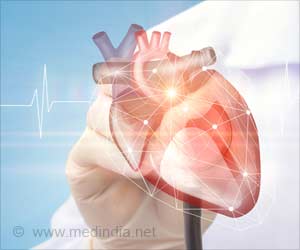World Heart Day: Body roundness measure could be key to predicting cardiovascular disease risk, offering a new tool for assessing heart health.

Body Roundness Index Trajectories and the Incidence of Cardiovascular Disease: Evidence From the China Health and Retirement Longitudinal Study
Go to source). Cardiovascular disease is the leading cause of death worldwide, with almost 20 million deaths annually, according to the American Heart Association’s Heart Disease and Stroke Statistics 2024 Update. Obesity is a significant modifiable risk factor for cardiovascular disease, and previous research has indicated that abdominal obesity may be a stronger risk factor for cardiovascular disease than general obesity.
‘Ever heard of body roundness index (BRI)? A consistently high #BRI over 6 years could be linked to a higher risk of #heartdisease. Could this be a new way to predict #cardiovascular health? #worldheartday #hearthealth’





What is Body Roundness Index (BRI)
BRI is an abdominal obesity-related index that combines waist circumference and height, reflecting the proportion of abdominal and visceral fat. In contrast, body mass index (BMI) only measures weight in relationship to height. Previous research has suggested that BRI is a valuable predictor of cardiovascular disease risk, and BRI may help determine the presence of Insulin resistance and metabolic syndrome.In this study, researchers evaluated the association of BRI with cardiovascular disease among participants in the China Health and Retirement Longitudinal Study (CHARLS), a nationally representative study of middle-aged and older adults in China.
“This is the first large study to evaluate BRI over time and how it may be associated with the incidence of cardiovascular disease among middle-aged and older Chinese adults,” said senior study author Yun Qian, M.D., Ph.D., a researcher in the department of chronic non-communicable disease control at Nanjing Medical University’s Wuxi Center for Disease Control and Prevention in Nanjing, China.
Researchers analyzed BRI measurements from 2011 to 2016 and detailed the trajectory of BRI levels of the study participants. Rather than relying on a single measurement of the body roundness index, they analyzed trajectories of change in BRI over time, providing a comprehensive understanding of how the levels fluctuated in the study participants. Individuals who shared similar BRI trajectories were assigned to groups. Researchers then compared BRI trajectories for three groups: the low-stable BRI trajectory group, the moderate-stable BRI trajectory group and the high-stable BRI trajectory group.
The analysis determined that higher BRI trajectories were significantly associated with the risk of cardiovascular disease, and with increasing and persistently higher BRI measurements, a higher risk of developing cardiovascular disease, stroke or cardiac events was evident, independent of the participants’ age, sex or other variables. During the last four years of the follow-up period, from 2017 to 2020, there were 3,052 cardiovascular events recorded and 894 cardiovascular deaths.
Advertisement
- Compared to participants in the low-stable BRI level group, the risk of cardiovascular disease in the moderate-stable BRI level group increased by 61%, and the risk in the high-stable BRI level group increased by 163%.
- When researchers accounted for demographic variables, medical history and cardiac medication history, significant differences in CVD were still observed in the moderate-stable BRI and high-stable BRI groups when compared to the low-stable BRI group.
- After further accounting for health measures, including blood pressure, blood glucose and cholesterol levels, the participants in the moderate-stable BRI group and the high-stable BRI group still had a higher risk of CVD diagnosis during the study period.
- The incidence of stroke and cardiac events was also significantly higher among participants in the moderate-stable and high-stable BRI level groups.
Study design, background and details:
- The study analyzed the health data for more than 9,935 adults living in China, ages 45 years and older, with an average age of 58 years at the beginning of the study. 53% of participants self-identified as men and 47% as women. All participants in the study analysis group had not reported a physician diagnosis of cardiovascular disease from 2011 to 2015. Participants were located in 150 counties across 28 provinces, and the sample used the lowest level of government organization - administrative villages in rural areas and neighborhoods in urban areas - as primary sampling units.
- Participants’ waist circumference and height were measured by medical staff from the Chinese Center for Disease Control and Prevention at their households when they enrolled in the study. Follow-up measurements were taken every two years by medical staff. The body roundness index of each participant was calculated using a standard formula factoring in waist circumference and height.
- Blood samples from participants were also collected at enrollment, which was in 2011-2012, and again in 2013-2014. This study used blood samples from 2011-2012.
- Blood pressure measurements were taken by medical staff with an electronic blood pressure monitor after five minutes of rest in the sitting position. The analysis used the average of three measurements taken at each visit; there were two visits in 2011-2012 and in 2013-2014.
- Staff also recorded participants’ health history and demographic information, including the presence of chronic disease and lifestyle risk factors.
- The participants were asked to self-report throughout the study follow-up period if they had been diagnosed by a health professional with a heart attack, stroke, angina, coronary heart disease, heart failure or other heart conditions.
Advertisement
- Body Roundness Index Trajectories and the Incidence of Cardiovascular Disease: Evidence From the China Health and Retirement Longitudinal Study - (https://pubmed.ncbi.nlm.nih.gov/39319466/)
Source-Eurekalert













